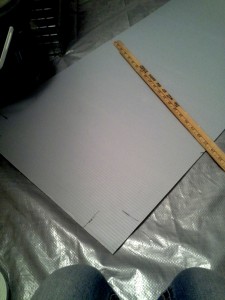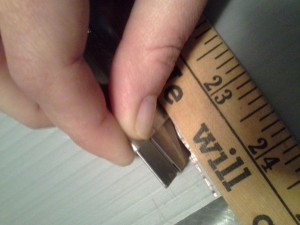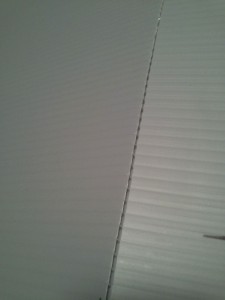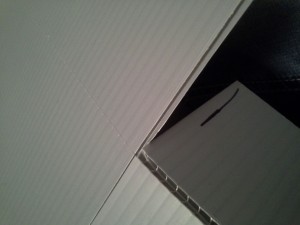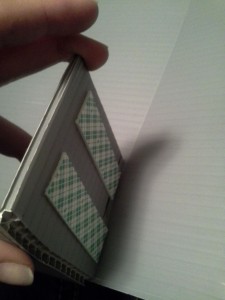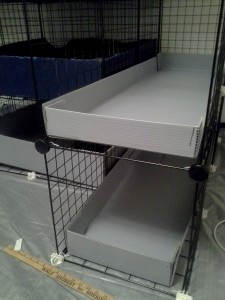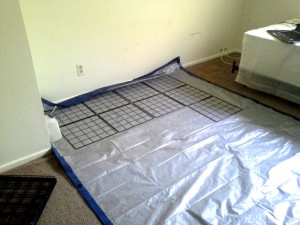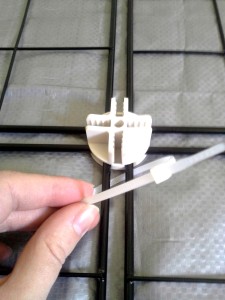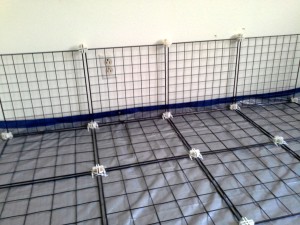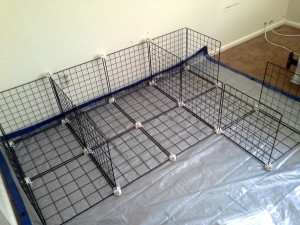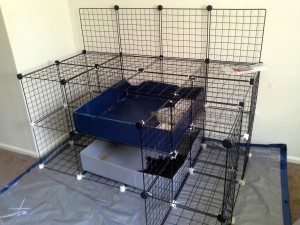This is the first in a three-part series on the construction of custom, multi-story C&C cages.

Caviaries are as unique as the people who operate them — no two setups are exactly the same. Consequently, there are a variety of ways to house our furry friends. No one housing system is superior to all others; what works for you might not work for someone else.
Legacy Caviary uses a C&C caging system almost exclusively. This particular method of housing is a relatively inexpensive way to provide ample cage space for your cavies, while making efficient use of floor space.
It’s also readily adaptable. As best I can tell, the C&C (cubes and coroplast) system was more or less developed by volunteers with the Cavy Spirit rescue. Though originally intended to house guinea pigs individually, as pets, we were able to modify the rescue’s designs to create a C&C cavy condo. I’ve had a number of people within the fancy ask about our cage setup, so I thought I’d post a little how-to.
If you’re unfamiliar with the C&C system, then your first step is to acquire the necessary materials. You’ll need two basic ingredients to “frame” your condos: grids and connectors from a commercial “cube” storage system, and a few packages of zip ties. For the pans, you’ll need to acquire some double-sided tape, like the kind used to mount photos on walls, and some sheets of coroplast plastic.
Locating coroplast will probably be the hardest part of this project. Several whole-sale, national outlets sell large sheets for as little as a few dollars, but the sheets are so large they cannot be shipped. You’ll have to find a distributor, and depending on where you look, the markup price can be quite high.
If the timing is right, you might be able to find coroplast for free. Around election season, look for unwanted plastic signs and commence a “community service project” of cleaning up election materials. But if you go this route, remember that the sheets will need to be large enough to build at least a single pan. You cannot form pans from multiple pieces of coroplast.
The other materials you need should be easier to find. Cubes units are sold at select retail outlets, so you’ll probably have better luck hunting online. For double-sided tape and zip ties, check with your local hardware store.
Before you start building, it’s generally a good idea to draw out a quick diagram, or at least put some kind of thought toward the design of your condo. One of the great benefits of using C&C caging is flexibility — you can easily build in any shape or size you desire. But a haphazard approach could result in an unstable condo. A few basic guidelines you will want to follow while planning: square or rectangular cages are significantly easier to clean, and the bottom pens should always be heavier than the top. Because the metal cubes weigh more than the plastic pans, and because the cubes can act as supports, the largest pen in terms of cage space should usually go on top.
If you’re having trouble coming up with your own design, I’ve diagrammed a couple of the designs we’ve used over the years. Note that the measurements listed here are approximate — the exact size of individual storage grids varies somewhat. However, it should give you a better idea of the each design’s dimensions, since these diagrams are nowhere close to scale. I apologize for that in advance, but I am neither an architect, nor a graphic designer.

A simple C&C design, suitable for about three cavies. Ideal for most pet owners.

A more complex C&C design, with two separate pens (one for boys and one for girls?). The top pen is suitable for three cavies, the bottom pen for two.

Our basic “cavy condo” design. You can build as many stories as you like, but I’m short, and I don’t like cleaning anything much taller than this. The top pen is suitable for four to five cavies, the 2×2 pens can hold up to three each.

An advanced “cavy condo” design. Like the easier design, the top pen can hold up to five cavies, and the 2×2 pens up to three. The 3×1 “cavy runs” on the side of the cage really shouldn’t house more than one adult at a time, but they’re perfect for show animals you want to keep separate for grooming.
To continue to part II, click here.
Tags: C&C cages, cavies, cavy, guinea pig, guinea pig cages, guinea pig housing, homemade




